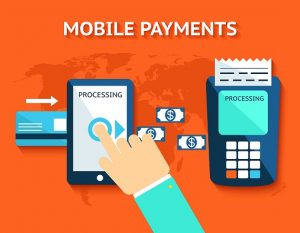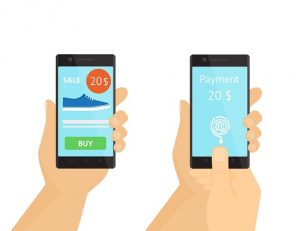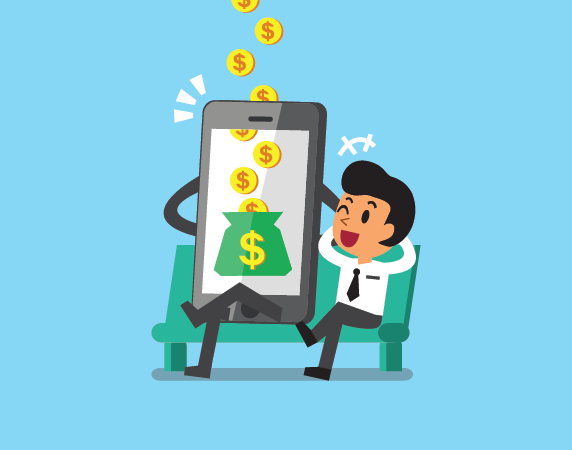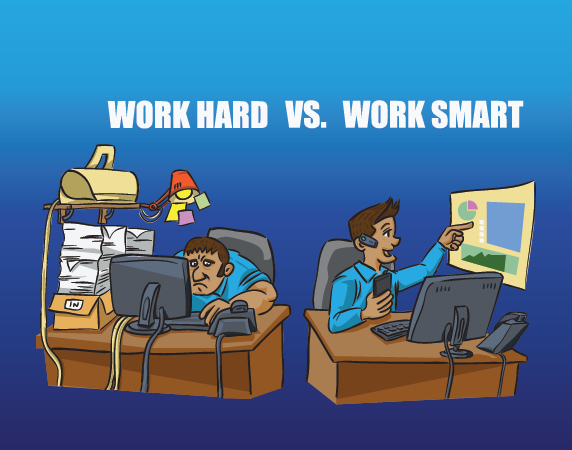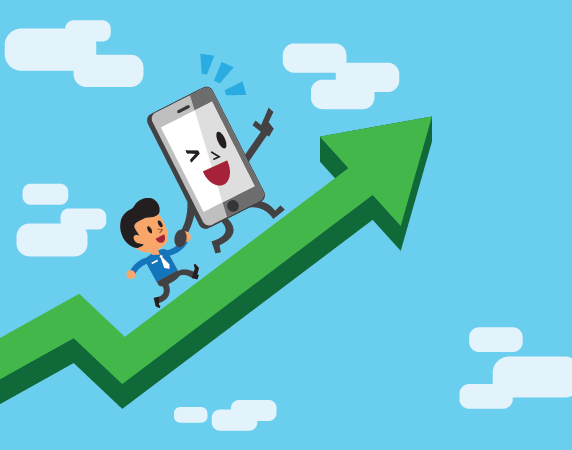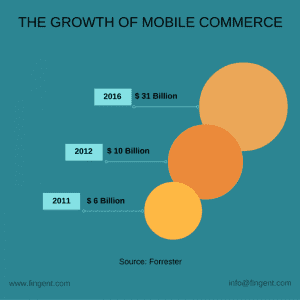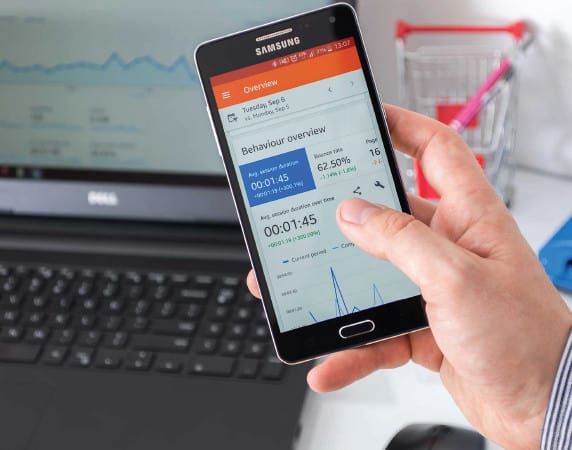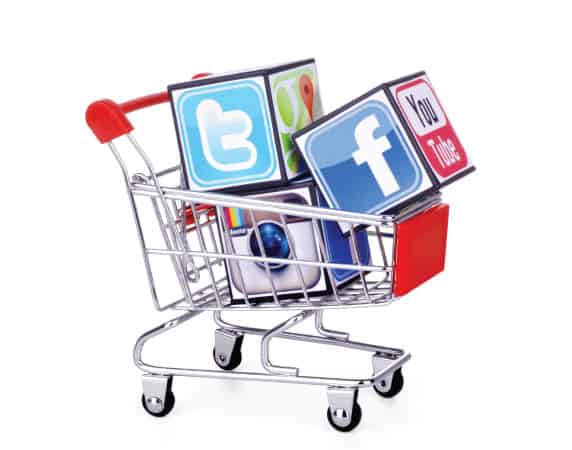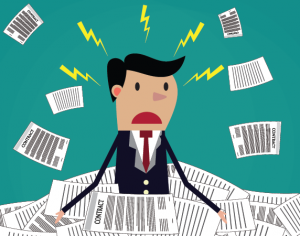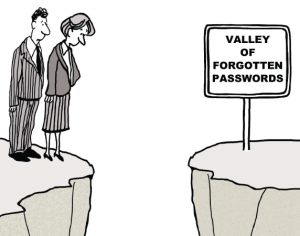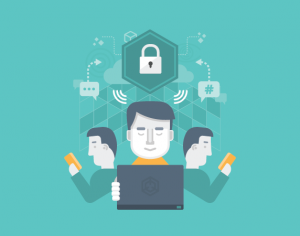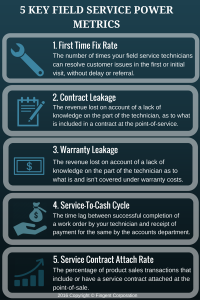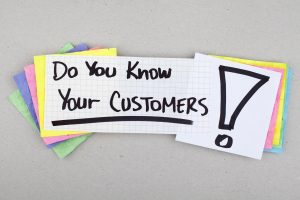Category: Business
Mobile payments are of a recent origin but have caught on like wildfire. Mobile-driven commerce now exceeds US$972.25 billion, and mobile payments are expected to touch US$3 trillion by 2021. This figure will equate to about 11% of all consumer card payment volume, up from the present levels of 6%.
Here are the top trends shaping mobile payments market.
Demographics Shape Mobile Payment Growth
The bulk of the growth in mobile payments market is from the Asia-Pacific region, especially China. Chinese customers now make more payments through mobile devices than through desktops. The high level of smartphone penetration cuts across both urban and rural areas.
The mobile-first mindset is catching up in the US and the UK as well. By 2020, more consumers in these countries will make payments for goods and services over smartphones than through desktops. About 46% of all digital commerce in the US and 38% of all digital commerce in the UK would be through a mobile device by 2020, up from 20% and 12% respectively, in 2015.
It comes as no surprise that cutting across geographies, the up-and-coming generations are in the forefront of adopting new technologies, and embracing mobile wallets in big numbers.
Convenience of On-the-Go Consumption Drives Growth
The chief factor driving the growth of mobile payments market is convenience.
M-payment allows consumers to transfer money for the purchase of goods and services, pay utility bills, collect paychecks, take insurance, make loans, and do much more, all with just their smartphone or tablet. People can either retain some money in their mobile wallet or link their bank account to the mobile wallet.
Furthermore, mobile devices make it very easy for people to conduct online transactions when commuting, or in the middle of doing something else. A consumer, having seen a hoarding when commuting to the office, no longer need to wait to get in front of a computer, but can rather pick up her smartphone and purchase the product immediately. Such a high level of on-the-go consumption is facilitated by the availability of user-friendly apps, which in turn is powered by mass subscriber volumes resulting from high levels of smartphone penetration, and widespread internet connection.
The Rise of Biometrics
Even as mobile payments surge, security remains a prime concern. Considering 70% of online fraud taking place through identity theft, the stakeholders of the mobile payment industry are increasingly looking at biometrics as a means to contain fraud. Biometric authentication involves validating the transaction based on the user’s fingerprints, iris and retina scanning, facial recognition, voice, or any other unique feature. With more and more smartphones now featuring fingerprint scanners, and other biometric enabling options, biometric authentication will become a common feature in the coming years.
The Quandary of Proximity Payments
The bulk of mobile payments today is remote mobile payments. The other side of mobile payments, proximity payments, is yet tot to gain sufficient traction, despite the potential. Gartner estimates money transfer to continue dominating mobile transactions, with an estimated 67% share in 2017, and predicts an overall annual growth of 35% in mobile transaction value, between 2013 and 2017. Nevertheless, with more and more traditional cash-only services, from taxis to hairdressers and from cleaning services to bakeries now able to accept mobile payments, proximity payments is sure to catch up in the near future.
What has restrained proximity payments so far is the big security hole in NFC, the enabling technology, as exposed by Charlie Miller, a smartphone hacker, in a 2012 Black Hat security conference. The rise of Bluetooth Low Energy (BLE), an alternative and more promising technology, coupled with several providers such as AliPay offering hassle-free mobile wallets means proximity payments is on the cusp of being the next big thing in mobile internet.
The Rise of Virtual Currencies
E-money ranging from bitcoins to Facebook Credits, and from egold to merchant loyalty points are becoming more and more popular. Such virtual currencies create a lock or loyalty, as it cannot be transferred outside of the system easily. While mainstream m-payment solutions steer clear of many such payment options owing to its legal gray area, there is increasing interest in the technology that drives such cryptocurrencies.
Supporting virtual currency such as bitcoins is peer-to-peer payment infrastructure, which allows making payments to any payee in the network, without routing it through a central agency or middleman. Such transactions are more robust, and is now very popular in the dark internet, for under-the-hood and illegal transactions. Whether currencies such as bitcoins will become mainstream is to be seen, but infrastructure such as peer to peer networks is sure to be adopted by legit providers as well, displacing existing m-payment systems, owing to its inherent security advantages.
The payment industry is in the midst of a new Gold Rush. In 2010-2011, about 700 companies invested about USD $3.4 billion in innovation related to the payments sector, and many of such investments are bearing fruit now. Gartner estimates global mobile transaction volume and value to average 35% annual growth between 2012 and 2017 and forecast a market worth $721 billion, and more than 450 million users, by 2017.
Despite the current limitations such as lack of a universally enforceable standard, m-payment is on its way to becoming a viable alternative to physical currency. E-tailers and other businesses are certain to lose out if they do not prepare for the mobile payment space. Success depends on setting up a robust and easy infrastructure, and this is best served by partnering with an experienced and resourceful provider, who has both the experience to do a good job, and the ingenuity to leverage the latest advancement and develop cutting-edge solutions. We fit the bill in all counts. Contact us today for all your m-payment requirements.
Stay up to date on what's new

Featured Blogs
Stay up to date on
what's new



Talk To Our Experts
Prep Up for the New Overtime Regulations! Go Digital!
One of the biggest changes that the business world has seen in the recent years, is the rapid rise in social media usage. It started off as a passing fad among the youth, and then went on to become one of the most powerful medium of communication and marketing, among businesses.
To be specific, there are about 1.55 billion active users on Facebook on a monthly basis, which basically accounts for 1 in 5 people. That explains, why it has so much of an influence, right?
You are probably in terms with this social media surge in business by now. Here let’s talk about another similar big change that is about to happen again in the business scenario- the recently updated overtime regulations.
Overtime Regulations
Just to quickly sum it up, the Department of Labor, recently made a significant change in the Fair Labor Standards Act (FLSA), by which a large number of employees that were classified as exempt, will be facing the changes. This means that a lot of employees who previously did not have to track their work time, will have to from now with >overtime, and will have to punch in and punch out like regular employees, with effect from December 1, 2016.
Much to the surprise of many SMBs, this amendment is indeed going to affect many of their employees, especially those whose salaries come near the margin of $47,476 per annum.
While this may prove to be an expensive regulation to comply with for many organizations, not keeping up to speed on the same is likely to cost a lot more.
According to several estimates, almost 70% of businesses are not compliant with even the existing FLSA, because of which they have had to suffer the most number of lawsuits with regard to wages. This was because a lot of employees had been misclassified as exempt, and had been missing out on overtime.
What you can do to keep up
To save yourself from such trouble, it is crucial for your business to automate your timecards. Before getting on to that thought, here are some tips:
- Make proper note of which of your employees are covered by the new rule. According to the new rule, even those employees who had previously been exempt, and earn less than $47,476 will be covered. You might want to check with your attorney about this.
- You might want to start tracking their work hours, even though the rule doesn’t come into effect until this December, so that you get a base record of their work time.
- You need to get a proper strong automated system in place, instead of those paper-based time cards, as they are no longer effective, slow down the whole process and can get you in line for lawsuits.
A good and accurate, cloud-based automated attendance system is the right way to go.
Since the timesheets and cards can be filled in by employees right from their mobile devices, it gets updated on the supervisor or manager’s system immediately, and hence everyone is in the loop, as to the worker’s timings. There are several other advantages of using a digital system.
Here are some:
Automatic Update on Accounts
As the whole system of attendance gets automated and each of the devices, like the ones with the employees, the ones with the managers and the centralized office system, are all integrated into a comprehensive mechanism, it becomes easy for all users to monitor the data. The same systems can also be linked to your accounting system, which makes the calculation of wages all the more effective.
Audit Trail
An integrated attendance system helps to maintain a proper audit trail, in case of any issues or complaints related to non-compliance of regulations. At the event of an audit, you will be able to pull up all the information and documentation you need, in a matter of minutes.
Accuracy
As the new regulation involves paying all workers who earn below the new threshold, for any overtime hours worked, you need to have an accurate track of the hours worked by your employees. It is pretty much impossible to achieve a good level of accuracy with paper-based systems. They are prone to human errors and of course, loss of data.
Decision Support
By having access to all accurate information on employee working hours, you get to take better, more informed decisions on their compensation. As the relevant authority on the matter, you can effectively remunerate the deserving employees, based on real-time evidence.
With all the above benefits, you can easily handle the huge change that is just around the corner, and any other changes that may come up, in the face of uncertainty.
According to the Aberdeen Group, companies that shift to an automated attendance system, are likely to witness huge benefits including a 100% increase in human capital ROI. It also led to a 32% decline in unplanned overtime.
December 1st is just a few months away. Now is the time to make the shift to automated time cards and get well acquainted with the new changes. Talk to our software experts to get a better idea of the whole digital attendance system, and get started.
Stay up to date on what's new

Featured Blogs
Stay up to date on
what's new



Talk To Our Experts
By the late 1980’s the prominent sound of “ding, ding, zip” of the typewriters that reverbed through the office halls gave way for a softer, mimicked, mechanical feel of the typewriters. The computer keyboards with time evolved, making it the familiar yet a distinct avatar of the faithful typewriters of the past. What changed was more than just the mechanical clinker in the office halls; they gave rise to a new status quo on how work was performed and what could be achieved by ideally leveraging the computers.
A Digital Revolution
A little bit of reflection on the successful business of our times like Facebook, WhatsApp, Zynga, Twitter, Square, Netflix, points to the fact that, these companies were either born digital or made efforts to alter their business to becoming digital. The companies that innovated, the ones that laid the old to rest, followed a process of creative destruction. What businesses have to remember is that, most of the times the employees and the customers have got a faster affinity to adapt to changing technology. This adoption would only be followed by an expectation that the business that they interact with, also follows suit. For B2B players it becomes important that they use Mobile, Big Data, IoT, 5G, and augmented reality for revolutionising the customer experience, optimising operational and industrial processes, innovating rapidly, bringing faster cash cycles, driving employee productivity and for improved service enhancements.
Statistics shows that there would be 6.1 billion smartphone users worldwide, 56% of all web traffic is through mobile and the global mobile data traffic is expected to reach 6.2 Exabytes/ month! That’s a lot of numbers indicating the importance of a Mobile strategy.
Digital Business Transformation through Mobility
Mobility is not just about going wireless. It focuses on the business process and the work models that effectively utilise mobile. Internally it is about the business models and processes that can enable marketing, HR and operations to utilise the benefits of going mobile like improved and faster decision making, increased productivity of the employees, faster resolution of internal issues, brand perception enhancements, reduced sales cycle time and increased revenues. But there are concerns of network security, compatibility and security of the devices, corporate and customer data security, regulatory requirements that always make the C-Suite executives think twice before they tread on these unsure waters.
Transforming a business through mobility has to have a well-rounded view of the entire business and a thorough recognition of the priorities of going mobile. It can be as simple as supporting more mobile handheld devices, extending internal systems for mobile access, offering incremental BYOD, providing more mobile support to the customer, implementing corporate mobility policies and so on. With Mobility, work becomes something that people do and not a place they go to, it has the capability to bring transformations with regards to:
Increased Revenue Potential
Mobility is pervasive and the ever trusted smartphone has led the march, becoming the go-to device, people use for work, pleasure or to kill boredom. Living in the comfort of your pockets, the mobile becomes the first medium of choice for one to interact with the outside world. This gives business a chance to connect to the customers at any point of time. Similarly, mobile apps that can help the customer consume products and services would invariably help to increase revenues. Employee empowerment and customer engagement are the two critical interactions for a business to make. Having a solid mobile strategy would help them both to be connected on the move, thus effectively enabling contracts and deals closures on real-time.
Flexibility
The first signs of going digital would be improved employee freedom. An employee would no longer be restricted to the cubicles, instead he/she will get a chance to work on ‘wherever whenever’ style. Through cloud-based applications, the staff would be able to access resources and attend to important work, no matter where they are. Such apps are now even built with offline connectivity that can help the field workers to sync things later into the cloud while effectively helping them perform their work. Reach out is one such app that has been developed with the offline connectivity, for managing work orders and jobs in inspection and audits. This goes a long way into providing flexibility, responsiveness and faster turnaround times, which in the end translate to excellent customer satisfaction. This sets up a win-win for both the customer and the business as it enhances the way you work and the way the business serves the customers need.
Collaboration
Another major contributor to employee productivity is the way mobility enables workplace collaboration, regardless of the physical proximity of individuals and teams. When effective collaboration is required among individuals and teams spread across multiple locations, mobile truly makes the effort more streamlined and natural. Cloud-based enterprise collaboration software can help teams to break down barriers of location and time, bringing the best of talents to work in unison.
Communication
With the flexible and collaborative nature of work, there comes a need of precise and timely communication that can draw the line between being successful or crashing out. It becomes highly essential that the mobile workforce is appraised with relevant metrics that help them to take the right decision and also to update crucial project updates. Aware mobility helps to accelerate performance by having this view of important metrics right on your trusted iOS or Android device. This can help to get on time information that helps you take that important decision when required.
Operational Efficiency and Productivity
Businesses would have to change the way they have conducted themselves over the years. They would need to get re-organised, to accommodate the task oriented usage style of mobile users and deliver them efficiently, without having any security concerns. Real time statistics of location and direction have already helped logistics and field service, to come up with strategic ways in which these could be leveraged. This leveraging should ideally result from a re-envisioned business process. Mobilisation of Salesforce interactions, supply chain management and innovative charging models can be devised by having mobile at the hub of the transformation, for a truly digital organization.
Stay up to date on what's new

Featured Blogs
Stay up to date on
what's new



Talk To Our Experts
Business leaders, often focusing on the immediate and the more pressing, relegate internal processes to the secondary. As a result, inefficiencies of various hues creep in, over time.
Inefficiencies manifest in many ways. Business processes and systems may be aligned to suit the technology rather than technology being applied to conduct business in the most seamless way. Additional processes may have come up to complete a part of the original process. Often, critical gaps in business processes and data silos make employees struggle to find the right information, or the right tools. The Boston Consulting Group estimates the amount of “procedures, vertical layers, interface structures, coordination bodies, and decision approvals” having increased by anywhere from 50 percent to 350 percent over the last fifteen years, in US and European companies, with managers spending as much as 40% of their time writing reports, and 30% to 60% of their time coordination meetings! The net result is invariably business executives having to work harder than necessary.
One knee-jerk reaction when such inefficiencies become too disruptive to be ignored is automation. However, mere automation of inefficient processes only accentuates waste. While automation is indeed a step in the right direction, businesses need to also make their processes smarter.
Here are a few ways in which business processes can be tweaked to enable working smart instead of working hard.
- Standardize processes, but one size does not always fit all. What works well in one division may not work well for the company overall. 3M found this out the hard way when they applied Six Sigma not just in accounting, but across-the-board, resulting in stifled innovation in a company where innovation is the key USP.
- Innovate. A 2011 PwC study reports 80% of CEOs believing innovation to drive efficiencies and providing a competitive advantage.
- Leverage on-demand and scalable cloud solutions such as PaaS and IaaS to optimize resources, reduce costs, create innovative products and services, and add value to existing business systems.
- Apply technology to tighten collaboration between stakeholders, including customers. Celina Insurance Group implemented a highly collaborative extranet to bring the company employees, 500+ independent agents and customers closer, and offer easy access to all relevant information, resulted in massive gains.
- Integrate the supply chain with business processes, across the value-chain, in real time, to connect people with the information they require. Diary major Danone reduced the timeline of its production optimization plans from two days to a mere 15 minutes now, by updating and integrating its production planning and scheduling technology.
- Leverage analytics to get a 360-degree view, and derive value, from available data. Apply emerging technologies to unlock data and information resident in physical and digital systems, and subject such data to analytics. Ensure such new intelligence is readily available to those in a position to use it, and actionable to make better decisions.
- Enable a mobile workforce capable of collaborating anytime from anywhere. Today’s executives and customers are always on the move. Mobile apps and workflows save time, improve efficiency, and also unlock new possibilities.
About 70% of CEOs invest in IT to reduce costs and to become more efficient, and 54% of them focus on growth initiatives powered by emerging technologies such as mobility. About 80% of manufacturing businesses expect mobile apps to increase their productivity by at least six percent. Mobile phones powered by cloud-based storage and apps allow employees to save a whopping 57 minutes a day, on average.
Smart employees are already up to the task. They often cobble up their own solutions, taking advantage of the tons of resources available online, when existing business resources do not meet their requirements. About 90% of all employees use cloud-based services, such as Skype and LinkedIn, for their work, and 79% of employees use cloud-based file sharing and collaboration tools, such as Dropbox or Microsoft OneDrive. Needless to say, such improvisations do not do away with all inefficiencies and come with grave security and data privacy risks.
Businesses need to facilitate smart employees by developing custom apps that automate workflows, provide digital forms, and sync offline data. A major stumbling block is the extensive time and resources that development of new custom apps requires. IT departments, already hard-pressed to keep existing systems running, often find the task of designing and updating apps that need to work with multiple platforms and disparate devices, too onerous. The solution is to partner with experienced providers, who not only make available complete and customized solutions, but also chips in with their specialized expertise and experience, to realise smart business processes.
Partnering with us allows you to have the best of both worlds – ability to roll out apps that leverage the latest cutting edge technology to enable smart business processes, without straddling your already overburdened and resource-crunched IT team with more responsibilities.
Stay up to date on what's new

Featured Blogs
Stay up to date on
what's new



Talk To Our Experts
Steve Jobs’s April 2010 prophecy of mobile devices replacing desktops and laptops as the computing devices of choice is now coming true. More people now access the internet using their mobile devices, compared to desktops or laptops. This has its effect in e-commerce as well.
M-commerce is now 34% of all ecommerce transactions, and expected to grow at 31% in 2017. Overall e-commerce is slated to grow at just 15% in the same period, meaning m-commerce is slated to grow 200% faster. Goldman Sachs estimates the total value of m-commerce at $626 billion by 2018, by which time m-commerce would account for half of all e-commerce transactions.
The reason for the surge in m-commerce is obvious. More and more people now prefer the convenience of taking out their smartphones when on the move in a commuter train or when whiling away time at the dentist’s office, rather than take time out to sit in front of a desk, wait for the laptop to boot, and get connected.
Many e-commerce players, quick to spot the trends, have come up with responsive mobile websites and rolled out native mobile apps, to facilitate the mobile-savvy customer. In fact e-tailers no longer have a choice; as 57% of customers won’t even recommend businesses with poor mobile sites, leave alone patronize it. However, most of the early adopters have also discovered merely launching mobile apps or mobile websites is not enough. It is still a fiercely competitive marketplace, and only those who go all out to facilitate the mobile customer wins.
Here are some ways to go all-out, to pamper the highly fickle mobile shopper
Leverage the Power of Simplicity.
The mobile is a consumption-focused device. Play to this strength by making it easy for the user to find what they are looking to consume. Leverage the power of simplicity through a minimalist design and a clean structure. The best apps do not require too much keyboarding or taping on menus, and makes all crucial process, be it registration, login, ordering, check-out, and payment fast and easy. Simplicity and minimalism offers a residual benefit of minimizing data traffic, and speeding up page-loads, which in turns boosts SEO.
Think like a Mobile Customer
The path and trajectory of desktop and mobile user are diametrically different. Successful e-tailers understand the customer’s journey and design the mobile experience around it, delivering a good UX. For instance, since most mobile users shop when on the move, or in the midst of doing something else, anything that shortens interaction time boosts the chances of conversion. Also, since mobile users generally prefer browsing different products, and as such, navigate different screens before actually making a purchase, making it easy to browse many products, add items to the cart, and check out later increases the chances of conversion and making long-term fans. Successful e-tailers also leverage analytics to personalize for the customer, taking into consideration the extremely personal nature of mobile devices.
The path and trajectory of desktop and mobile user are diametrically different. Successful e-tailers understand the customer’s journey and design the mobile experience around it, delivering a good UX. For instance, since most mobile users shop when on the move, or in the midst of doing something else, anything that shortens interaction time boosts the chances of conversion. Also, since mobile users generally prefer browsing different products, and as such, navigate different screens before actually making a purchase, making it easy to browse many products, add items to the cart, and check out later increases the chances of conversion and making long-term fans. Successful e-tailers also leverage analytics to personalize for the customer, taking into consideration the extremely personal nature of mobile devices.
The path and trajectory of desktop and mobile user are diametrically different. Successful e-tailers understand the customer’s journey and design the mobile experience around it, delivering a good UX. For instance, since most mobile users shop when on the move, or in the midst of doing something else, anything that shortens interaction time boosts the chances of conversion. Also, since mobile users generally prefer browsing different products, and as such, navigate different screens before actually making a purchase, making it easy to browse many products, add items to the cart, and check out later increases the chances of conversion and making long-term fans. Successful e-tailers also leverage analytics to personalize for the customer, taking into consideration the extremely personal nature of mobile devices.
Leverage the Power of Innovation
The overriding focus of successful e-tailers is how to uniquely serve their mobile customers. They strive to make their mobile assets dynamic, through promos, deals, offers, discounts, and more. In this, they innovate to ensure their apps leverage the latest developments in technology, or to ride the latest smartphone trends. The best m-commerce apps leverage the unique capability of mobile devices, such as geo-targeting, location-based services, QR codes, and more, to deliver customized offers and deals, and other value-added services.
Integrate Mobile with Overall e-Commerce Strategy
A mobile friendly website or a native app may induce the customer to make a purchase immediately. However, for all the efforts put in by the e-tailer, there is always a possibility of sheer hardware limitations driving poor mobile experience. As such, it is important to integrate the mobile strategy with the overall e-commerce strategy, and provide a consistent experience across channels, where a customer may “capture” of the purchase on mobile and complete the transaction on a larger screen. This is even more important as 53% of customers look at products in brick and mortar store and buy online.
Tie in m-Commerce with Social Media
Mobile and social media are almost inseparable. Facebook, Twitter, Snapchat, Instagram, and the likes are on the screens of nearly everyone stuck on the subway, bus, or train. Successful e-tailers who integrate their m-commerce strategy with their social efforts are able to draw in quite a number of social media visitors straight to the m-commerce site.
There is however, no one-size-fits-all solution. The best way to milk the ongoing m-commerce revolution depends on your specific business. Partnering with us to expand and enhance your mobile strategy allows you to leverage our wide experience and expertise, and is a guaranteed way to save time and improve your ROI.
Stay up to date on what's new

Featured Blogs
Stay up to date on
what's new



Talk To Our Experts
In today’s hyper-connected age, with people always on the move, one would think not developing enterprises mobility solution is akin to the company shooting itself on the foot. Yet many companies hesitate to develop mobility solutions, wary as they are about misconceptions associated with it.
Here are the top six myths related to enterprise mobility solutions.
Myth # 1: Legacy Software is Too Entrenched to Displace
Legacy software is often the whipping boy for enterprises who refrain from developing mobility solutions. A key accusation is legacy software draining IT budgets, making it hard to fund new software.
The reality is that developing new mobility software doesn’t require massive investment. In fact, today’s rapidly advancing mobile solution landscape makes it possible to develop mobility solutions with little or no programming skills, with a fraction of the cost, time, and effort it takes to develop traditional solutions.
The problem comes when many enterprises try to throw in more servers as the solution to every IT problem they confront. Smart enterprises simply leverage scalable and affordable cloud-based solutions, which does not involve CAPEX costs.
Moreover, investment in mobility solutions often pays back for itself quickly, as mobility allows the company to become lean and mean, and spare the costs required to maintain legacy systems.
Myth #2: Enterprise Silos Make Mobility Solutions a Non-Starter
Most organizations that have been around for a while live with data and software silos. Sales, HR, Marketing, Finance, and other teams all use different tools, and operate disparate enterprise systems.
While data silos are indeed a drag and removing it can be game-changers for enterprise transformation, silos needn’t necessarily come in the way of developing mobility solutions. Installing a remote desktop server on the legacy system makes it easy to access data on it. If the legacy system doesn’t allow remote access, it is obsolete anyway. Also, many mobility apps can actually live with silos, and when information is required cutting across silos, there are several cost-effective analytic solutions now available that can access data from different silos and collate it in the cloud.
Myth#3: Potential Disruptions Create More Havoc than the Gains Mobility Brings
Many companies are inspired by the famous adage “if it ain’t broke, don’t fix it,” and refuse to dabble with mobility solution, least the upgrade disrupts what is already working. They consider the difficulty of migrating legacy business software and data, the downtime it causes to business critical processes, and the possible need to overhaul data center hardware and software. While such challenges were indeed big stumbling blocks in the past, the advancement of software-as-a-service (SaaS) solutions solve much of these issues. SaaS upgrades are in most cases done overnight, and does not require investment in new hardware or software.
Myth#4: Password Overload and Other Ills Breed End-User Resentment
No enterprise initiative succeeds with the support and cooperation of end-users. While enterprise mobility help end-user employees in many ways, they often raise concern about having to remember many passwords for the various enterprise apps they need to access. They forget passwords and raise tickets, dragging IT resources for account recovery.
While the concern is genuine, easy solutions are also available, most notably in the form of unified, easy single sign-on (SSO). Using SSO, a user needs to login just once, to gain access to all systems. SSO even facilitates integration with the user’s Google Account, or the credentials used to access Microsoft Office 365.
Myth #5: Inadequate Training and Support Doom Implementation
A common grouse against new solutions in general and mobility solutions in particular, is employees not getting enough training on enterprise apps to be productive.
The problem is actually misplaced, and has to do more with the design of the mobility solution than lack of training. Mobile apps are primarily meant to be easy, explicit, and self-evident. A “kitchen sink” (all-encompassing solution) mobile app, replicating the features and functionality of desktop applications rarely succeeds as it just combines the worst of both worlds. The ideal enterprise mobile apps rather contain just a few key functions, focusing on a specific process, and come with limited navigational choices and simple UX, primed for quick access.
Lopez Research Enterprise Mobility Benchmark estimate 60% of companies allowing BYOD, meaning employees would be familiar with device in the first place.
Myth #6: Enterprise Mobility Solutions are a Security Nightmare.
About one in every three companies had their sensitive data compromised through lost or stolen devices. To counter such damning statistics, most enterprises take inspiration from the adage “If you are not there to be hit, you cannot be hit,” and limit mobile access.
Security risks associated with mobility software are real, but also blown out of proportion. A big majority of the victims are either careless, or the company had weak security standards in the first place. Making risk management a key focus within the overall mobility strategy, and deploying effective mobile device management protocols, in combination with advanced encryption, modern authentication mechanisms, and even analytics mitigate most risks, and make mobility solution as safe as on-premises software.
Enterprises are waking up to the need to embarking on a sound mobility strategy, dispelling the myths associated with mobility. Lopez Research Enterprise Mobility Benchmark reveals 68% of companies ranking mobile-enabling the business as a top concern for 2015, a concern surpassed only by securing corporate data, and more than half of the companies planning to build 10 or more enterprise mobile apps in 2016.
Get in touch with us to fine tune your mobile strategy and develop state of the art mobile apps. Our cutting-edge enterprise mobility solutions not just enable your workforce to access much needed critical information anytime and anywhere, but also increase productivity and efficiency, and help you streamline your processes towards facilitating the customer.
Stay up to date on what's new

Featured Blogs
Stay up to date on
what's new



Talk To Our Experts
Work related injuries account for about $250 million in the United States, across several industries. And out of this, about 20% of them have been found to be lower back injuries. As a matter of fact, according to the U.S Bureau of Labor Statistics, back injuries accounted for a major number of lost employee work days.
Most organizations do know the importance of occupational health and safety practices, yet a lot of them still struggle to maintain it. Even though there are a number of systems available for it, organizations find it hard to decide the effectiveness of one over the other.
This is Where Wearable or Wearable Technology can Help.
Injuries can happen by chance, and sometimes they are unavoidable, like an accidental slip, or fall. Most other times though, one of the major causes of injuries is a lack of proper technique in performing a job. For instance, in the case of loading and unloading, often asymmetrical loading leads to injuries.
Wearables can help in this regard, by keeping track of and recording every single step taken, or move made, or turn or twist and promptly send back a report stating exactly where the workers pose a possibility for injury due to poor movements.
How Wearables can Help Improve Workplace Safety
Wearable technology has become so sophisticated these days that they can accurately measure human movements and postures like never before. Thus they are capable of providing companies with prompt, objective data that can be easily interpreted and turned into effective results.
Wearable technology makes use of certain small sensors that can be placed on the workers, as they go about their daily work routines. These sensors are capable of providing live data regarding their movements, which can be accompanied with high-definition videos that can help accurately single out the risk areas easily. Repeated problematic movements can be identified as a possibility of injury. Alternatively, if the worker hasn’t made any movement for a particular amount of time, the system can automatically trigger an alert to co-workers, to act on instantly.
For example, VINCI, a global construction company in the UK, actually implemented wearables in their workplace. They placed sensors on their brick-laying workers to collect real-time objective data, which resulted in lesser risks of lower back injury and even increased productivity and efficiency. Some of the detailed results were:
- Upto 85% reduction in time spent doing work involving a more than 20 degrees back bending
- An 84% reduction in lower back muscle activation
- A 17% increase in productivity, in terms of bricks per minute
- A 70% reduction in repetitive higher risk associated movements
GPS in Wearable to Ensure Technician and Client Safety
Tracking and monitoring technologies integrated to wearables ensure remote technicians remain safe. ReachOut, for example, helps integrate a right mix of mobile devices and wearable technology with location tracking capabilities. This provides a comprehensive in-the-field safety for technicians and allows clients to tackle tricky “lone worker” problems, no matter how remote the technician’s location.
To support the above facts, the Institute of Management Studies at Goldsmiths, University of London has found that the productivity of people using wearables has increased by 8.5%
There are many more cases where wearable technologies can be used to improve workplace safety. For example, several Australian engineers have developed certain “patches” that are programmed to detect toxic gases and UV radiation, which can immensely help workers in the chemical manufacturing industry.
Another instance is in Rio Tinto, where their coal mine truck drivers use a certain device that resembles a baseball hat, to measure brainwaves in order to keep a check on and avoid fatigue-related problems.
Thus, it is evident that wearable technologies can do more than just reduce work injuries.
On a technical note, aside from the fact that work injuries affect productivity and efficiency, unsafe work environments can also increase the insurance costs incurred by a company. Moreover, hazardous environments, without possible safety precautions, can affect employee morale in a huge way, and in turn, reduce employee retention rates.
Hence, it is in the best interest of every organization to invest in improving the safety of workers, and reducing the risks of injuries. Wearables are capable of providing this much-needed safety, by carefully monitoring and comprehending human movements as well as other environmental factors, thereby helping to maintain an optimum level of health for them and the overall business.
Stay up to date on what's new

Featured Blogs
Stay up to date on
what's new



Talk To Our Experts
In Field Service industry, where the technicians are face to face with customers everyday, good operational efficiency, productive staff, and effective resource management are all interconnected and are important aspects of the business. Businesses should carefully measure all these areas that indicate the health of their field service. Data and analytics thus recorded, needs to be evaluated to drive more informed business decisions. So, how do you measure these to drive more insights from it?
This photo-blog lists five unique field service power metrics to identify and monitor your company’s performance.
Stay up to date on what's new

Featured Blogs
Stay up to date on
what's new



Talk To Our Experts
For how long have you been in the field service industry? For a considerably long time I’m assuming.
In that case, you might have a fairly clear idea of where customer expectations are headed. You might even have gone over some of the overwhelming numbers on the level of service expected from providers like you, in the coming years.
If you haven’t already, well, according to a report by the American Express, about 35% of customers believe that companies who provide “excellent customer service” have “earned their business” and about 25% of them were found to place a high value on excellent customer service. For more interesting facts on this, read Is Your Business Ready for the Next Generation of Customer Service?
In our previous blog, we had discussed the importance of being proactive in field service and how much of a positive impact it can have in your business.
So now that you know that it is indeed going to be a matter of survival for you in the near future, here we have some pointers for you to get started on the major shift.
First off, you need to know that it doesn’t have to be an expensive or time-consuming process. You are simply putting your customers first, as the bottom line of your proactive strategy. And we all know, it will be beneficial to your business, without a doubt.
Secondly, you need to make a few changes in your “online presence”.
Increase your availability: This does not mean just leaving a contact number on your website and addressing issues as and when they come. It means you should make yourself completely available to be contacted by your customers across a number of channels apart from your website, like email, phone, and most importantly, the social media. This makes it possible for customers to contact you whenever they want and through the channel of their choice, making your service much more effective.
Provide the basic help: This means that you would be allowing your customers to help themselves on small issues. You can do that by putting up an an FAQ page on your website or by providing a step-by-step guide on how customers can fix certain small issues themselves. More like a DIY guide. This in a way empowers them, which can work to your advantage ultimately.
Now let’s get into the steps:
Engage in the Conversations about you on Social Media
Let’s face it. Whether you like it or not, your customers are going to talk about you, either in private or through the social media (which is the case oftentimes). Now, when they do talk about you on social media channels like Twitter and Facebook, you need to pay attention and see it as an opportunity for you to delight your customers, regardless of whether the conversation is in a good context or a bad context. Engage in those conversations and try addressing more of your customers’ needs.
For example, Morton’s Steakhouse, one of the best steak restaurants in the world, found on their Twitter feed that one of their customers – a popular blogger, Peter Shankman had mentioned them in his tweet, suggesting they deliver a steak to him when he landed at the airport.
And believe it or not, waiting for him at the airport was a Morton’s employee, with his steak!
That’s the kind of service that delights customers.
This is how you can possibly address positive comments or just wiggle your way into delighting your customers through random comments as well.
As for negative comments or complaints, you could respond by apologising first and then go on to explaining how or what you can do to fix the issue.
Ask for feedback and make sure everything is ok
Feedback is by far one of the most effective and simple ways to get to know your customers better and to understand exactly what they want. It is only when you know what they want, that you can serve them better. And checking in every once in a while can not only ensure that things are alright but also allow you to identify the areas where you need to work on and take steps to correct them before your customers start feeling dissatisfied.
For this purpose, here are some things you could do:
- Have an easy-to-fill feedback form on your website
- Send across simple surveys to your customers. You can easily create surveys, manage them as well as get useful insights from the responses using simple survey tools or applications.
- Go through and analyze your customer service tickets to address some of the most common questions or needs
- You can even ask your customers personally, or interview your customers about what they think of your services and how you could further help them
Admit Mistakes as Early as Possible
The age old saying “Honesty is the best policy” holds good in business too. If you’ve made a mistake or if there is an issue that could cause an inconvenience to your customers, it is always better to let them know of it, well beforehand.
It is not a good idea to have them find it out when they were probably relying on your good service at that point in time.
For example, if you’ve shipped a product or placed an order for a service, a day later than promised, you need to let them know through an email or a phone call, rather than keep them waiting in ignorance.
If you have a software upgrade scheduled, you need to inform your customers about the upgrade well beforehand, so that they can be prepared and don’t end up being unable to access the information they need, when they need it.
Reward your Customers as a ‘Thank-You’ for their Support
Rewarding is one of the most effective ways to build customer loyalty, above customer satisfaction. In fact, rewards and offers are the second and third best ways to increase customer loyalty, the first being excellent service of course.
Proactive rewards like discounts in between purchases or special offers to fix issues that the customers probably didn’t even know they had are good examples.
You could also offer discounts or refunds in cases where customers are not happy when you’ve made a mistake and have acknowledged it too.
Sending your long-term customers some discounts, a little ahead of their subscription renewal, in the form of a reminder is also a good way to thank your customers and make sure they stay.
These are some of the ways in which you could get started on shifting to your proactive service strategy. Once you get started, you could probably find more ways and turn it into more of a habit. That way, you not only dodge the chances of any risk but also build your customer base and goodwill. In no time, you will be able to stay ahead in the competition and be a leader in the field service industry.
Stay up to date on what's new

Featured Blogs
Stay up to date on
what's new



Talk To Our Experts
What seemed to be a far-fetched idea or an unclear, undefined entity, a few years ago, is what is ruling the world of business today. Enterprise mobility.
People are all for the concept of “bringing their own devices” at their workplaces these days. More than 60% of workers have access to their company data or work through their smartphones and tablets. Interestingly, only about a third of business enterprises have any kind of BYOD (Bring-Your-Own-Device) management strategy in place.
“People are bringing their own devices, but in many cases, they and their companies are not taking care of those devices and the applications on them appropriately.”, says Richard Absalom, consumer impact technology analyst at Ovum.
It is very important to have a proper Enterprise Mobility Management strategy for every organization, especially since most of them are spending a pretty significant amount on mobility.
Here is what you can do to better manage enterprise mobility.
Involving Everyone
Any BYOD policy has to be developed with inputs from all over the organization. Driven by the CIO, BYOD management efforts should involve everyone from developers to users to the IT team. Even the human resource and legal departments have to be included. As it means an entire culture change in the organization, it necessitates the need for everyone to be on the same page, about what can and cannot be accessed over personal devices.
Smartphone Technologies

An Exit or Loss Policy
While devising BYOD policies, something that people generally tend to miss out, is an exit strategy. When an employee in any department of an organization leaves, he will be carrying a lot of information concerning his department on his smartphone, with him. This is a huge loss for the organization.
“When an employee leaves, say in sales, and they take all of the contacts on their personal phone, that is a big corporate asset that goes missing.”- Absalom
Hence, you need to develop appropriate theft, loss as well as exit policies. Along with technical issues you need to raise the security stakes. You need to find a balance with all these features and risks, so as to protect your employees’ personal information as well as your business reputation.
Insecure WiFi
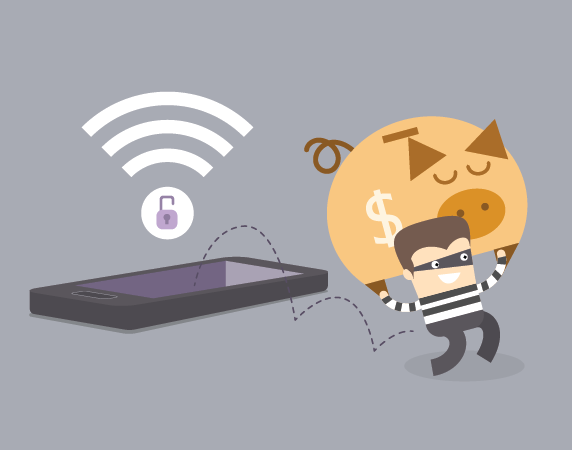
User Credentials
Credentials for users, such as usernames and passwords, need to be created securely with utmost care. Credentials which may be sufficient for certain kinds of applications may not be suitable for other kinds of applications that need more security. Short number strings for example,while may be appropriate authentication for a user on game leaderboards and scoreboards, they won’t be enough for a social networking application.
All of these practices call for crisp and clear policy guidelines. Their compliance needs to be made mandatory as well. You need to make sure that all your employees are well aware of the rules regarding joining, leaving or altering their role or participation in a BYOD initiative. Signatures on policy agreements need to be made compulsory. Absalom also said that it would be good to have all employees agree to legally upholding their policies and to getting their devices locked on events of it being stolen, lost or compromised in any way.
Hence, if well managed, enterprise mobility can be the best thing that ever happened to your business. Keep the above pointers in mind, embrace mobility and manage it efficiently.
Stay up to date on what's new

Featured Blogs
Stay up to date on
what's new



